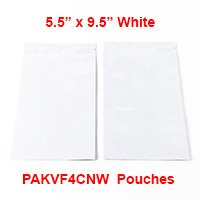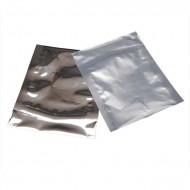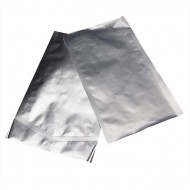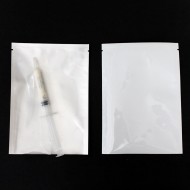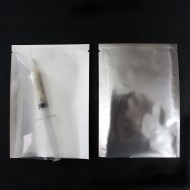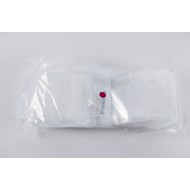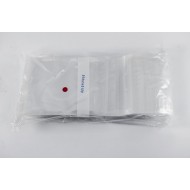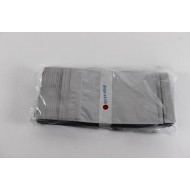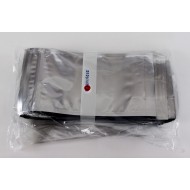
Medical Test Kit Packaging
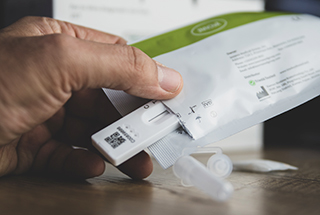
Originally associated with pregnancy tests and now widely known for rapid Covid-19 testing, ELISA (enzyme-linked immunosorbent assay) tests have become indispensible diagnostic tools. They are used to test for HIV, Hepatitis (and many other STIs), cholesterol/liver function, narcotics/prescription pharmaceuticals, Lyme disease, Ebola; researchers have discovered applications for them in genetic testing, pharmaceutical research, veterinary medicine, agriculture, food safety, environmental testing, and more.
Integral to the ELISA testing model is the lateral flow assay (LFA), also known as a lateral flow device or lateral flow test. This is a small cassette that holds pads of pourous material to which a fluid sample is applied to detect the presence or absence of a specified substance, such as a hormone or antigen. Because this technology is small in scale and easy to use, LFAs have been widely distributed for point-of-care use - not just laboratories, but hospitals, clinics, at home, at work - practically anywhere.
Lateral flow tests require specific packaging in order to ensure that the device will produce a reliable result. Protection from moisture is key, since this testing model relies on using a liquid sample and moisture could compromise its effectiveness. IMPAK offers structures with ultra low WVTR (water vapor transmission rate) in a variety of sizes and styles, as well as desiccants that maintain extremely low in-package moisture content and sealers that allow precise temperature control for consistent pouch sealing.
Elements of a Sorbent System
IMPAK is known for its expertise in providing sorbent systems. In fact, the original domain name the company created in the 1990's was SorbentSystems.com because of our ability to combine the right amount of barrier in a flexible film with the appropriate sorbent to meet your target relative humidity, even if that's less than 5%.
High Barrier Pouches
We at IMPAK are aware that producers of medical testing devices have stringent requirements for the packaging environment of their products. Our Quality Assurance team rigorously tests our materials in order to provide accurate specifications and ensure reliable performance.
For packaging lateral flow devices or microwell plates, our experts recommend specific laminate structures such as 4.5 mil thickness PAKVF4W, or PAKVF4CNW, which has a WVTR as low as < 0.0005 gr./100in.2 in 24 hrs. With a high puncture and tensile strength, high barrier materials will keep contents safe from rough handling as well as oxygen and moisture. We carry Medical divice ready pouches in a varierty of sizes, colors, and styles - and offer custom printing.
(Pictured: 5.5" x 9.5" OD PAKVF4CNW White MylarFoil Pouch with Tamper Evident Zipseal)
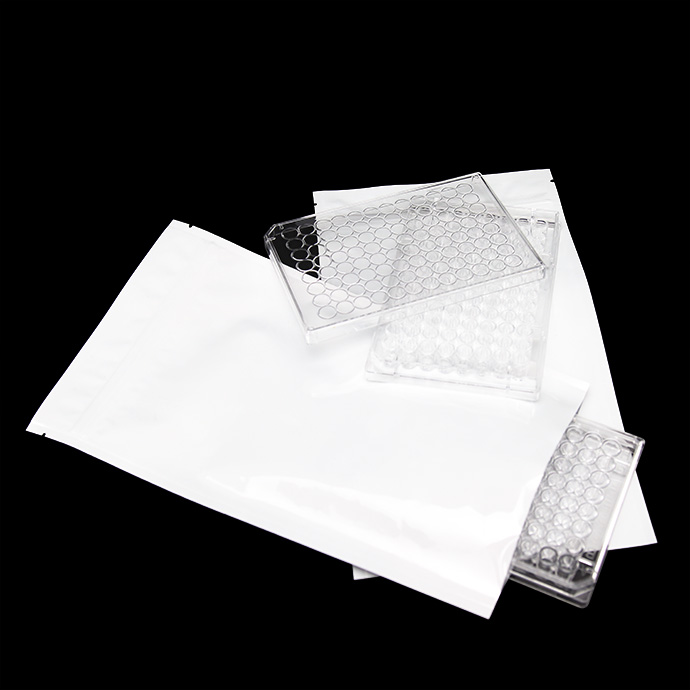
Reliable Desiccants
Those who have used LFAs packaged for individual use are aware that these devices are packed with a small desiccant packet. Keeping the relative humidity in the LFA packaging environment as low as possible is of critical importance. There are options for what type of desiccant is used; silica gel packets are common, but they are not as reliably effective as other types of desiccant.
IMPAK has decades of experience with sorbents. Our research confirms that molecular sieve is the most reliably effective desiccant for applications such as this where high adsorption capacity at low relative humidity is required.
The chart shown here contains data from a test of the effectiveness of a 28g packet of molecular sieve desiccant over time in a range of temperatures. It shows that within 12 hours the desiccant reduced the relative humidity inside a sealed 15" x 21" mylar pouch to below a 10% target. Though there was slight desorption in extreme temperatures, the molecular sieve kept the RH within a 1.2% tolerance of the target and quickly continued to reduce overall RH.
Read more about the effectiveness of molecular sieve.
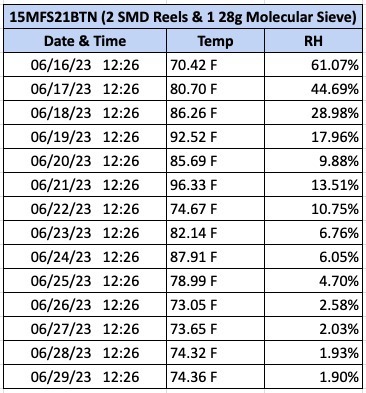
Efficient Sealers
The exacting standards required for packaging of medical testing devices extends beyond consumables alone. After securing the right pouches and desiccants, it is necessary to guarantee that the packaging process is verifiably consistent. Choosing the right heat sealer for your application is vital.
IMPAK's line of RapidSealer™ Continuous Band Sealers are reliable machines that are well-known in the industry for facilitating high throughput. Contact one of our experts to get an idea of how well one of these can expedite your production. And ask about our Print Rapid™ Ink Jet Printer Rapid Band Sealer, capable of printing lot numbers, dates, bar codes, and more on your package while sealing.
(Pictured: Print Rapid™ Ink Jet Printer Rapid Band Sealer)
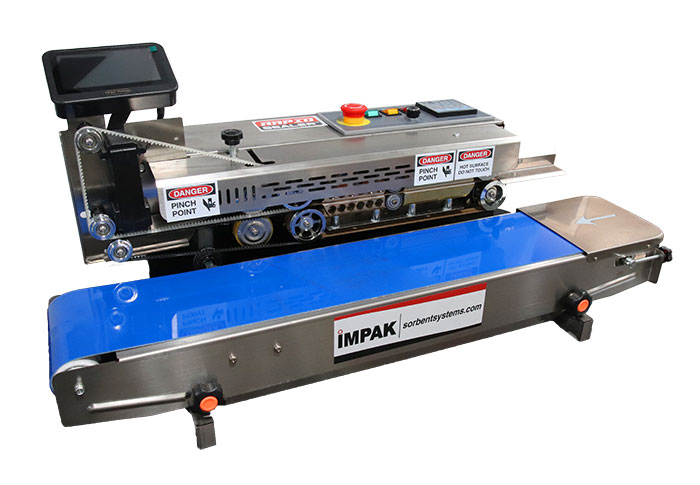
How Does a Lateral Flow Assay Work?
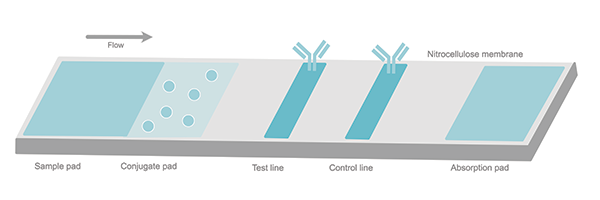
An LFA device consists of a small cassette which houses a series of pads with differing features and functions. On one end there is typically a small reservoir into which a liquid sample (e.g. saliva, urine, blood) is placed. The liquid flows into the initial sample pad via adsorption until it meets the second, or conjugate pad. The conjugate pad contains a reagent that combines with the analyte from the sample (if present). As the fluid continues to flow laterally through capillary action, it travels through another membrane with test and control lines. The test lines contain immobilized proteins that bind to any instances of the analyte-bound reagent particles, creating a visual marker indicating presence of the analyte. The control lines contain affinity ligands that bind to reagent particles (with or without the analyte) to confirm that the sample has moved through the device properly. Finally, an absorption pad at the end of the device collects excess sample fluid.
MicroWell Plate Pouches
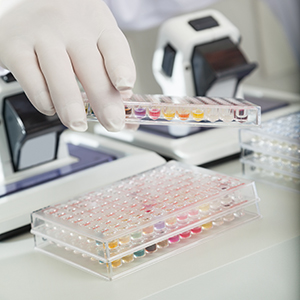
MicroWell plates, also known as microplates or microtiter plates, are common equipment in diagnostic labs. These rigid containers are frequently used to perform ELISA testing on multiple samples. IMPAK offers high barrier pouches that are sized to fit 96-well microplates for storage and transport, as well as sealers to guarantee reliable protection from contamination. If your microwell plates need to be vacuum sealed, our 5.5" x 9.5" White PAKVF4CNW MylarFoil pouches, pictured here, are a perfect choice to provide a tight, dependable vacuum seal.
5.25" x 8.0" PAKVF4D Pouch with Tamper Evident ZipSeal
